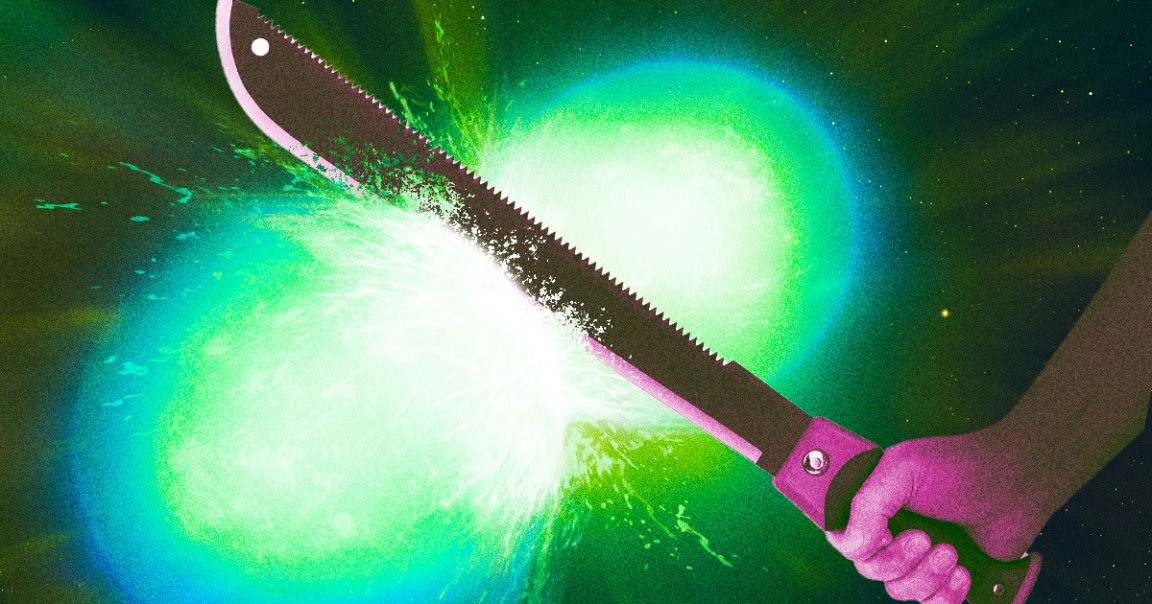
Massive Attack
When massive stars run out of fuel, weird and spectacular things can happen. When these stellar giants — churning with titanic nuclear fusion reactions — reach the end of their lifespan, they often collapse into a bright fiery supernova. From there, in a process that scientists are still trying to understand fully, the remaining core can either become a black hole or very dense neutron star.
Now, scientists from New York University have proposed one strange phenomenon that may result from a massive star’s core collapsing: powerful forces within a certain type of neutron star could burst forth and slice the cosmic object like a blade, sending out intense bursts of radiation.
The NYU scientists published their research in a yet-to-be-peer-reviewed preprint paper. In it, they detailed how they created simulations of the forces within a magnetar, a type of neutron star with a powerful magnetic field that’s many times more powerful than a typical neutron star — and unimaginably much stronger, of course, than lesser magnetic fields like Earth’s own.
Fruit Ninja
The researchers were studying this phenomenon in an effort to understand the origin of gamma ray bursts. Past studies have proposed that black holes and magnetars could be sources.
The NYU calculations showed that radiation, honed by powerful magnetic fields, within a newly created magnetar could burrow through its “dense stellar interior” and essentially slice the star in half. The researchers called this intense beam of energy a relativistic blade.
This blade of radiation shoots out for some distance, which may explain the observation of some gamma ray bursts that last longer than typical ones that flare and expire in seconds.
The scientists plan to further study these proposed relativistic blades — a strange phenomenon that just might deepen our knowledge of some of the most brutal and exotic physics in the universe.
More on astronomy: Webb Telescope Makes Surprising Finding About the Most Distant Star Ever Seen